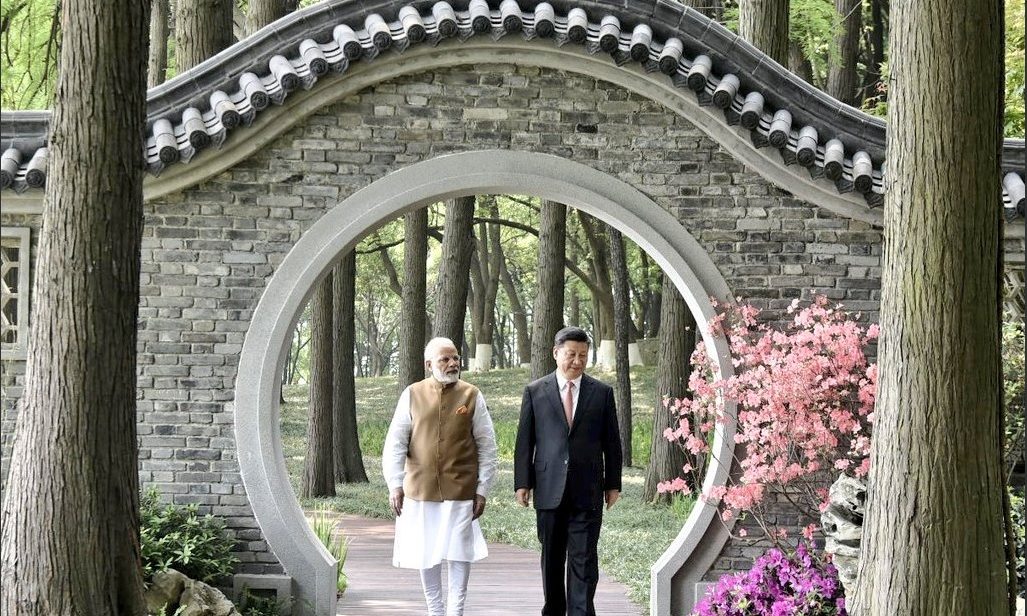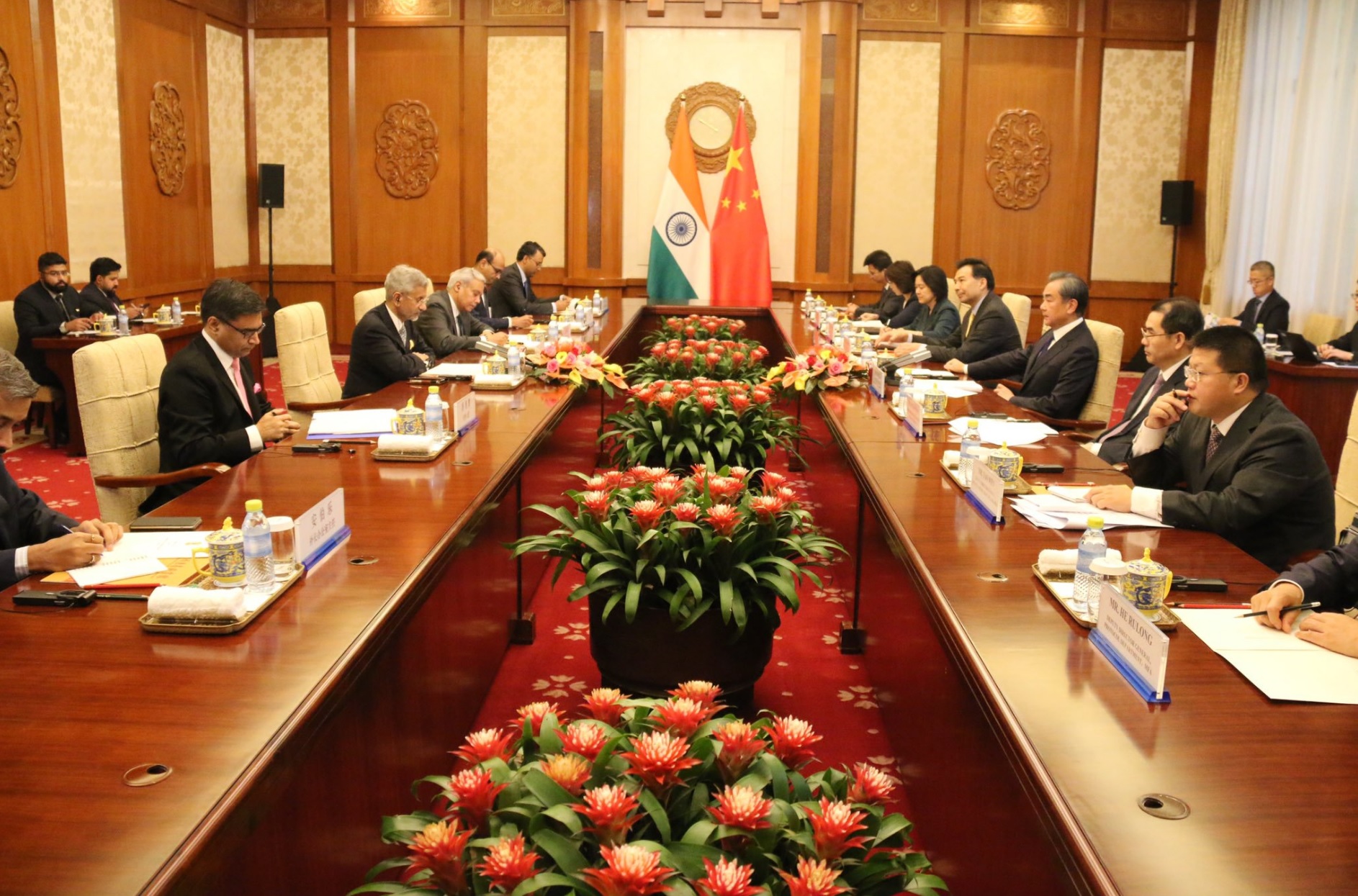
In the aftermath of the Doklam standoff between the Indian and Chinese militaries in the summer of 2017, Prime Minister Narendra Modi and President Xi Jinping met for an informal summit in Wuhan, China and ushered in a new phase of bilateral understanding between the two countries, which came to be referred to as the “Wuhan spirit.” With a follow-up to that summit in the offing in India next month, it is pertinent to consider what probable issues could dominate the meeting and what it may mean for the direction of this consequential bilateral relationship in the near future.
Agreeing to Disagree on the Border
There are a number of factors that determine the nature of the India-China relationship, either pushing it forward or pulling it backwards. First is India and China’s unresolved border dispute harking back to the 1962 war. Although both sides have maintained relative military restraint at the Line of Actual Control (LAC) since then, the protracted nature of the dispute has sometimes led to clashes and military standoffs, usually as a result of Chinese incursion into Indian territory. The military standoff at Doklam, at the tri-junction of India, Bhutan, and China, in 2017 brought home the urgency of mechanisms to deal with such incidents and led to the summit in Wuhan. In this context, New Delhi and Beijing are making efforts to improve their military-to-military cooperation through communication and joint exercises. Such developments have to be seen in the context of the “strategic guidance” given by Xi and Modi to their respective militaries during the Wuhan Summit to “to strengthen communication in order to build trust and mutual understanding and enhance predictability and effectiveness in the management of border affairs.” These military-to-military confidence building measures (CBMs) and discussion on how to sustain an amicable dialogue over the border issue would remain a priority for both sides in the upcoming summit as well. To be sure, neither side expects the resolution of the border issue in the near future; these discussions are geared towards maintaining the status quo on the border and arresting any unmanageable downturn in the India-China relationship.
The BRI Tangle
Another factor is China and India’s competition for economic and strategic influence in India’s immediate and extended neighborhood. China’s Belt and Road Initiative (BRI) has become an irritant in the relationship—countries in India’s immediate neighborhood are pivotal spokes in the continental and maritime aspects of BRI and thus, New Delhi eyes Beijing’s growing influence in its strategic backyard with much skepticism. India has refused to join the BRI because one of its critical projects, the China-Pakistan Economic Corridor (CPEC), passes through disputed territory that India claims in full. In addition, New Delhi is pursuing a more proactive and outcome-oriented approach to supporting economic development in its neighborhood by providing lines of credit to a number of countries. Without naming China, New Delhi is also emphasizing the difference between its transparent and people-oriented projects in the region as compared to those supported by Beijing that may put recipient countries into debt traps.
The inherent complexity and the growing scope of India-China relations are bound to create differences between them over both regional and global issues. However, the first informal Modi-Xi summit in Wuhan clearly showed the priority that both sides attach to moving the relationship forward, while managing the differences, whether protracted or new.
India’s promotion of connectivity projects such as the International North-South Transport (a multi-modal connectivity project spanning around 7,200-km routes across the Eurasian region), the Chabahar Port (an India-Afghanistan-Iran trilateral arrangement), the Ashgabat Agreement (an multi-modal transport and transit corridor project between Central Asia and the Persian Gulf), and the ambitious Asia-Africa Growth Corridor cannot be seen as directly competing with China’s BRI. However, it does highlight New Delhi’s intention to create space for itself in countries in its immediate and extended neighborhood that are worried about the opacity of China’s BRI projects. Therefore, in any subsequent meetings between Modi and Xi, the BRI is bound to come up, whether directly or indirectly, and how the two countries find ways and means of working around this contentious issue will likely be on the agenda.
Fostering Multilateral Convergence
India-China relations do not exist in a vacuum—there is a regional and global context that underpins their bilateral dynamics. New Delhi and Beijing’s ties with other countries as well as their interactions with each other in multilateral fora become a factor in shaping their bilateral relationship. India’s strategic partnership with the United States and their collaborative approach to managing a rising China as well as China’s alliance with Pakistan to keep India tied down in South Asia do impinge on India-China relations. Despite this competitive dynamic in their region, New Delhi and Beijing seem intent to find areas of cooperation globally, particularly in multilateral settings. Joint membership in a host of multilateral bodies provides ample scope for Prime Minister Modi and President Xi to do this, such as fora like G20, BRICS (Brazil, Russia, India, China, South Africa), SCO (Shanghai Cooperation Organization), and RIC (Russia, India, China). Their engagement in these meetings allow Indian and Chinese leaders an opportunity to balance the inherent competition-cooperation dynamics between the two countries. And thus, a conversation on issues of convergence between India and China with regard to the wider global environment is likely to feature during the upcoming Modi-Xi summit.

Differences are Natural
As India and China attempt to take their bilateral relationship forward in the midst of differences, issues such as sovereignty, trade imbalance, and regional security may become thorns in their side. However, even though managing such a multidimensional relationship with recurrent setbacks will continue to remain a challenge, the informal meeting at Wuhan seemed to have served its purpose of resetting the India-China relationship from the low of the Doklam standoff to the stability it currently enjoys.
The inherent complexity and the growing scope of India-China relations are bound to create differences between them over both regional and global issues. However, the first informal Modi-Xi summit in Wuhan clearly showed the priority that both sides attach to moving the relationship forward, while managing the differences, whether protracted or new. Indian Foreign Minister S. Jaishankar, reiterating the position taken by Prime Minister Modi and President Xi Jinping, recently said that “differences should not become disputes.” The Indian government’s reorganization of the state of Jammu and Kashmir in early August, leading to bifurcation of the erstwhile state into the Union Territories of Jammu and Kashmir and Ladakh ignited some concerns in the Chinese establishment, leading to a China-Pakistan effort to push the United Nations Security Council (UNSC) to come out with a resolution/statement on India’s action. However, this issue does not seem to have the potency to create major hiccups in India-China relations. Though Beijing initially raised concerns regarding “India’s inclusion of the Chinese territory in the western sector” in reference to Ladakh, comments by Foreign Minister Wang Yi during Jaishankar’s visit to China were quite muted. In fact, Chinese foreign ministry spokesperson Hua Chunying recently suggested that the Kashmir issue may not even come up for discussion in the upcoming summit. The fact that Jaishankar’s China visit did not see any discordant notes between the two sides and the importance being attached to the second Modi-Xi informal summit seems to have put to rest the possibility that the Kashmir issue may seriously impede India-China relations, at least for now.
Similarly, on the economic side, India and China do have problems—from the Indian point of view, there is a growing trade imbalance in China’s favor as also market access issues for Indian companies in China. However, the Chinese side has taken meaningful steps to address these concerns over the last few months, such as increasing exports from India. Recently, the Sino-U.S. trade war as well the tariff tussle between India and the United States have also brought some traction to India-China trade. In addition, both sides are showing willingness to explore ways and means to expand economic cooperation, as evidenced by the recently-held India-China Strategic Economic Dialogue.
Managing the Relationship
When commenting on the way forward in India-China relations, Chinese Ambassador to India Sun Weidong gave top priority to making the upcoming informal summit between Modi and Xi a success. As India and China attempt to take their bilateral relationship forward in the midst of differences, issues such as sovereignty, trade imbalance, and regional security may become thorns in their side. However, even though managing such a multidimensional relationship with recurrent setbacks will continue to remain a challenge, the informal meeting at Wuhan seemed to have served its purpose of resetting the India-China relationship from the low of the Doklam standoff to the stability it currently enjoys. Thus, the follow-up summit would, in most likeliness, carry forward the mantra of balancing the opportunities and challenges in India-China relations. As such, the future of the relationship would be shaped by how the two countries can innovate new ways of cooperating and collaborating with each other on old and new areas of convergence, while simultaneously making constant efforts to identify and manage differences.
***
Image 1: MEA India via Twitter
Image 2: EOI Beijing via Twitter


